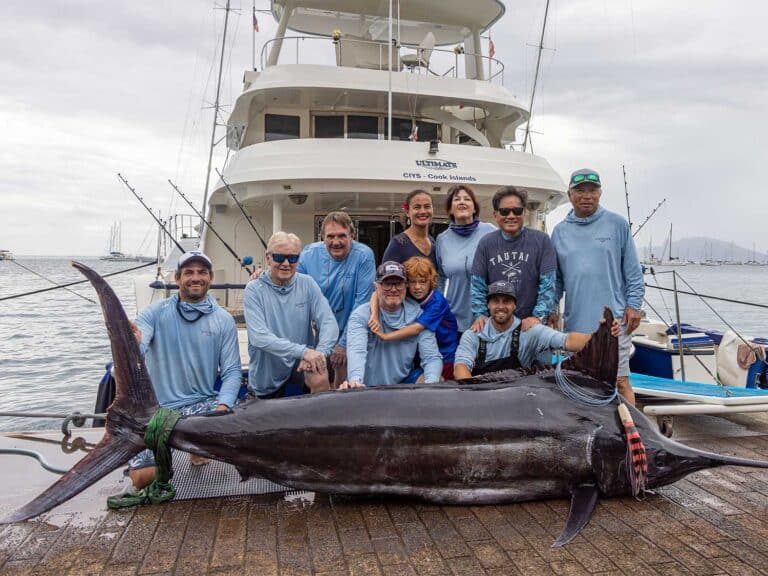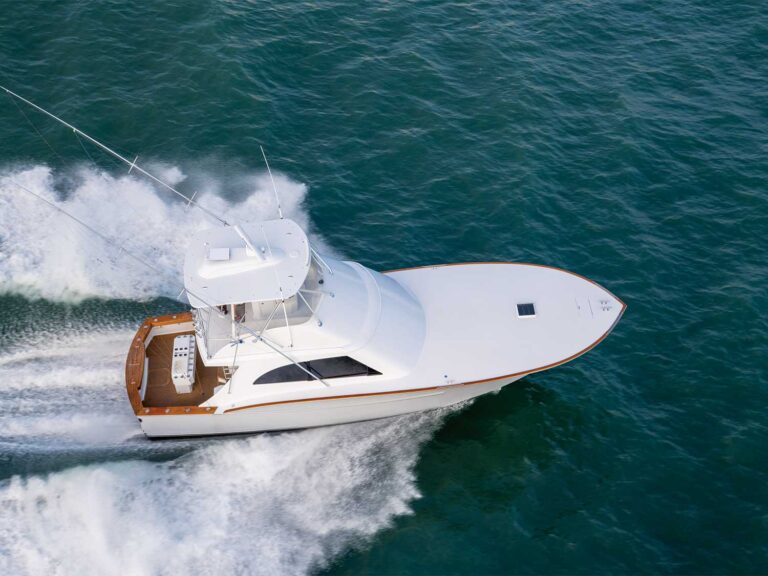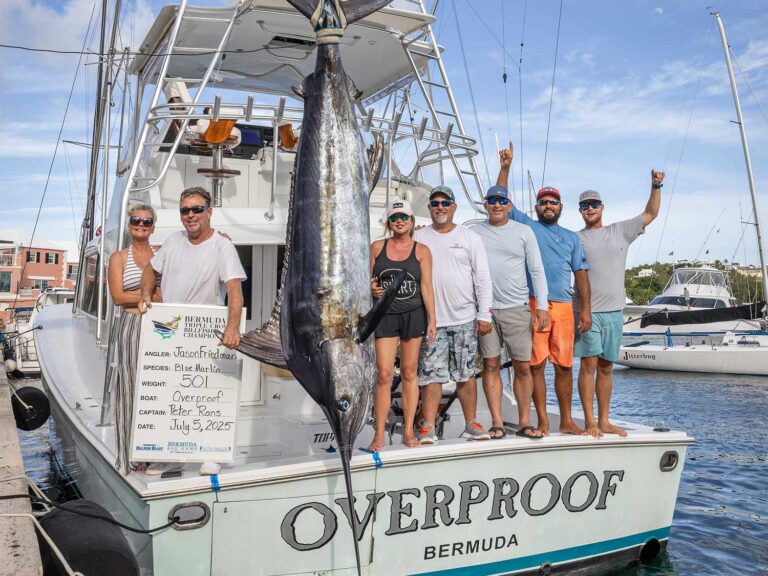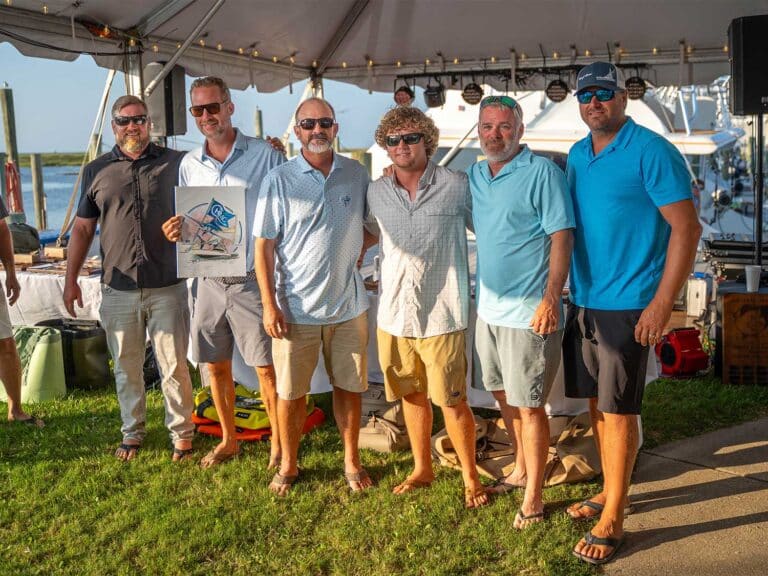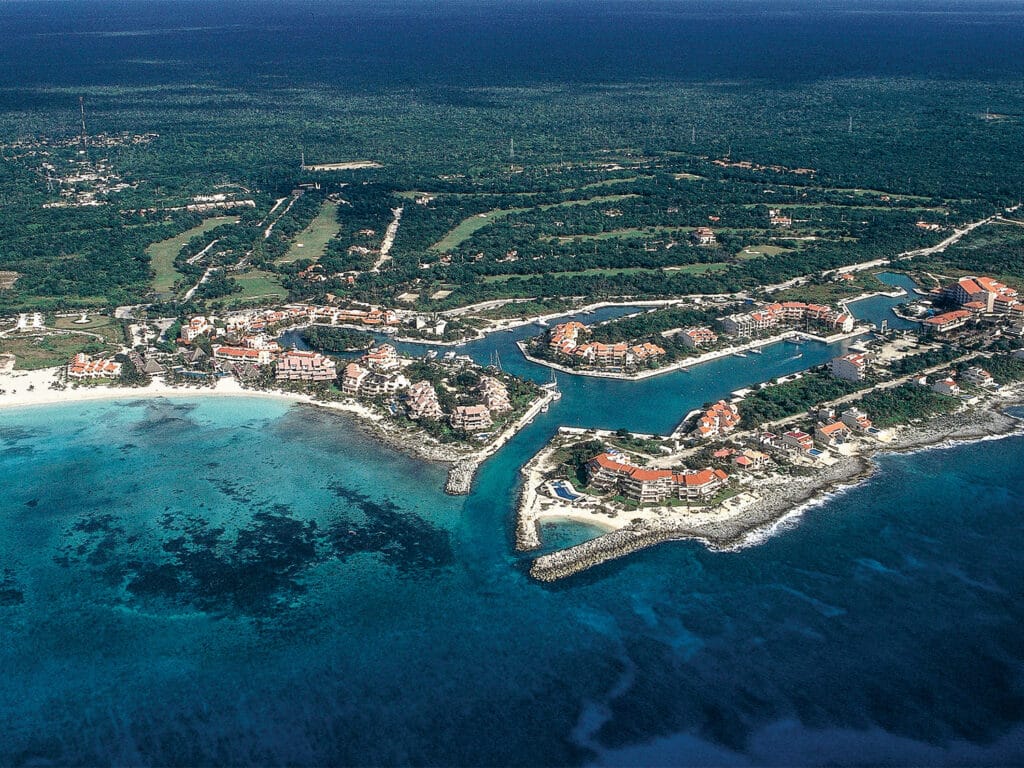
Special delivery: Sign up for the free Marlin email newsletter. Subscribe to Marlin magazine and get a year of highly collectible, keepsake editions – plus access to the digital edition and archives.
As the end of the fishing season approached, Victory’s Lawrence “LR” Hastings excitedly slipped into a yellow slicker suit in preparation for the evening ahead. Looking like a younger and wilder version of the Gorton’s fisherman, Hastings tied Capt. Chris Turner’s favorite salad bowl to the top of his head as a makeshift helmet, while a cape made from a clear trash bag hung from his neck. Other mates emerged from their boats with aluminum foil wrapped around their chests, arms and heads, with two alien-inspired antennae standing tall atop their skulls. Puerto Aventuras’ legendary Tour de PA was about to start, and the participating mates decked out in every imaginable oddity grabbed their bikes, ready for the race: a course full of obstacles, human-propped ramps and beer-chugging stations.
As a journalist, I love coming across material that could easily give inspiration to the writers at National Lampoon. In the 1990s, the sport-fishing crews who enjoyed the seclusion of Puerto Aventuras, a small marina carved into Mexico’s Yucatan Peninsula, lived experiences that would certainly be well-suited for a box-office hit. Those captains, mates, owners, guests and locals lived unabashedly, enjoying the camaraderie that, even now some 30 years later, they have yet to see replicated anywhere else. You’ll recognize many, if not all, of the names that frequented Puerto Aventuras during that colorful decade, and their stories will bring on the nostalgia of a spirited and invincible youth, one steeped in tequila, sunshine, family-style meals and, more importantly, lots of billfish bites.
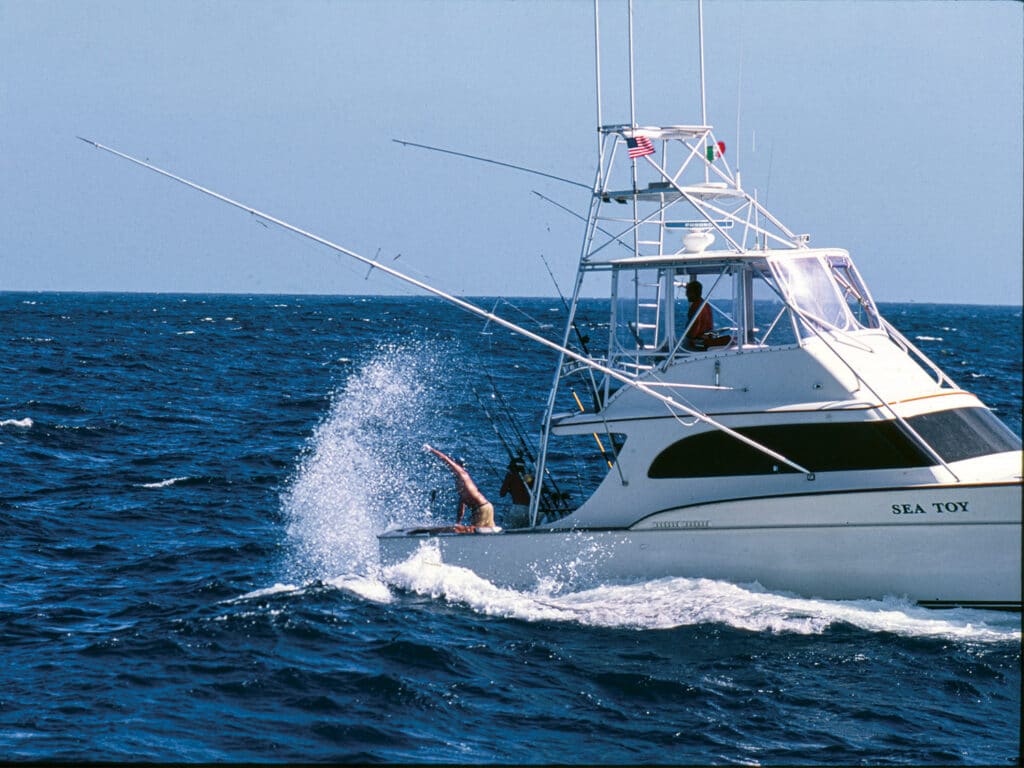
Yucatan Dreams
Prior to the 1990s, the area now known as the Riviera Maya remained largely undeveloped. Other than the already popular destinations of Isla Mujeres, Cancun and Cozumel, the remote coastline didn’t yet have the infrastructure to support a fleet of large traveling sportboats. That would soon change when a group of young developers from Mexico City dreamed of combining their greatest passions: architecture, adventure, diving and the natural world. Having spent time diving the Spanish galleons found just off the coast, the young hopefuls purchased property and broke ground on what is now known as Puerto Aventuras, one of the first resorts of its kind along the Cancun-Tulum corridor.
“‘Magical’ is the best word to describe it,” says Lynn Hearn, who worked with the developers creating a fitness center and spa, and met her husband, Capt. Danny Hearn (now of Blank Check fame), at Puerto Aventuras. “It was something new in the middle of nowhere,” she says. “It felt so far away from everything, but it was only about an hour from Cancun and 20 minutes from Playa del Carmen.”
At that time, the brand-new marina was relatively small, holding 20 to 30 boats, not including the small fleet of dive pangas that would eventually also tie up there. Puerto Aventuras offered enticing amenities, including access to a golf course, tennis court, beach club, condos, a sprinkling of small businesses, a dive shop, and several restaurants. With the Mesoamerican Reef—the world’s second-largest barrier reef—just off its shores, the owners hoped to draw in scuba divers and nature lovers, as well as world-class fishermen.
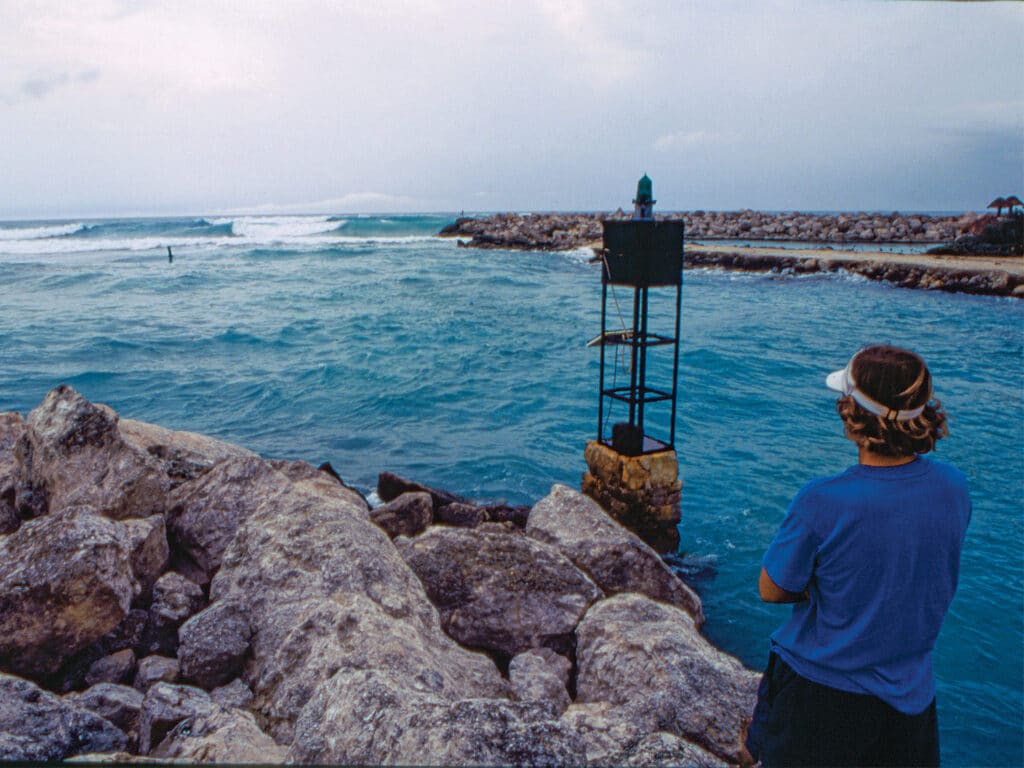
As with many things in this industry, word of mouth helped to spread the news of the little marina in the Yucatan. In this case, the coconut telegraph began with Subaru’s Capt. Tim Hyde. “Tim was a good friend of mine and ‘discovered’ PA after spending some time over at Cozumel,” Tarheel’s Capt. John Bayliss explains. “When Subaru fished over on the edge on the peninsula side, Tim noticed this small inlet and a lot of construction going on. Curiosity got the best of him, and one day, he went in that tiny cut and wound up staying there for a season. He invited Capt. Paul Spencer, Capt. Mike ‘Bubblegum’ Merritt and me to come down there and see the place, and to go fishing with him for a few days.”
Those days were spellbinding for Bayliss and Merritt. The fishing was unlike anything they had ever experienced. “We couldn’t believe that we could be fishing for sails in good numbers so close to the beach,” Bayliss recalls. “We were able to fish a few hundred yards outside the inlet.” The next year, both Bayliss and Merritt would pull into the marina and tie up for the season themselves, along with several other boats from North Carolina, Texas, and both coasts of Florida. Boats such as Blank Check, Tarheel, Sea Pup, Escapade, Jasmine, Subaru, Victory, Valiant, Sea Toy, Revenge, Patsea, Don Teo, Bud Man, Neon Rainbow and Reel Quick, just to name a handful, all made a fleeting, yet symbolically eternal, home in that little marina during the ’90s.
Prime time in PA
Spring was the prime season in Puerto Aventuras, with most boats arriving in late February or March and packing up for their next location in May. And the fishing was spectacular. Scott Kerrigan, the talented photographer whose images have helped bring the pages of Marlin to life for several decades, worked as a mate on Revenge and spent two seasons in PA. “The water was just teeming with life,” he says, “and the topography of that part of the Yucatan pushed blue water up the coastline in a steady march northbound along the deep reefs. It was such a one-of-a-kind place, where yellowtail snapper would boil on the long rigger in 50 feet of water and a sailfish would pick up the other in 100 feet. The coastline was like Jurassic Park. We would troll along the jungle and stumble upon a Mayan ruin, all while checking the beach for wildlife. I’d look at the left short, then the right short, and then to the beach for panthers.”
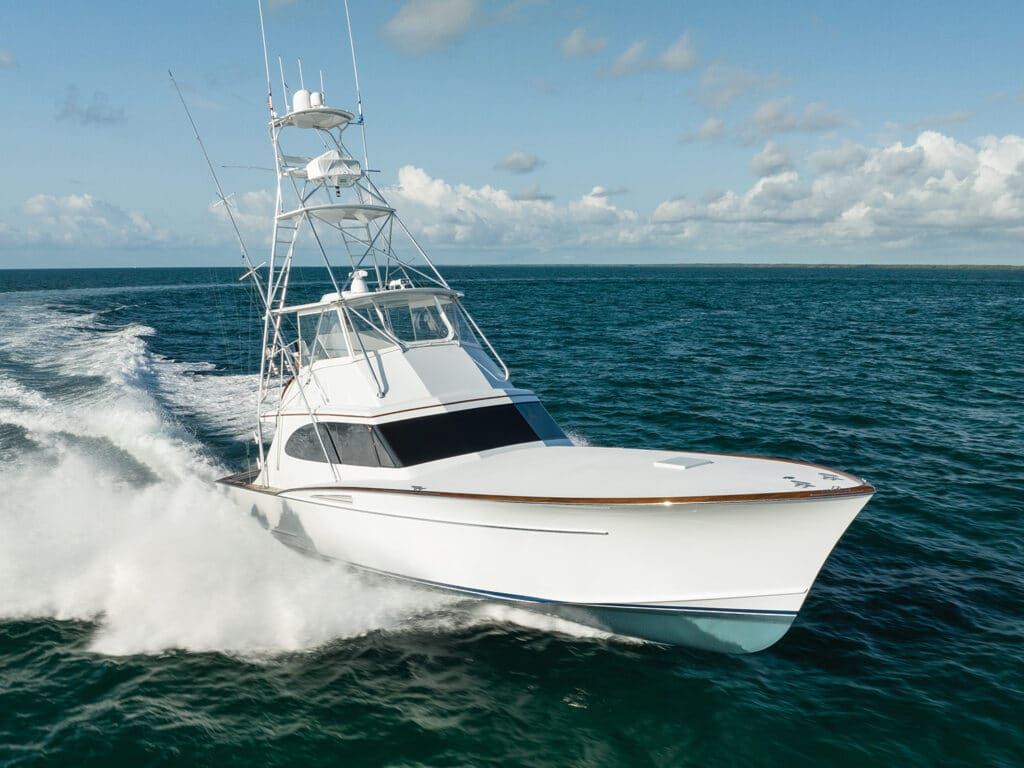
White and blue marlin, sailfish, dolphin, mackerel, swordfish, mako sharks, and a long list of reef fish could all be regular targets for the anglers fishing out of Puerto Aventuras, and crews could expect double-
digit bites, with sailfish the primary catch throughout the season. The marlin species ordinarily turned up in late April and May. Grand slams could be caught within 100 yards of the inlet in just three bites, as proved by Danny Hearn’s mother while fishing on Don Teo. They didn’t even have to get up on plane before lines hit the water that day.
In addition to excellent fishing, the Yucatan Peninsula is famous for its Mayan ruins and archaeological sites, as well as its unique geography. The area’s cenotes and cave systems have long captivated explorers from all over the world. On their days off, many of the crews left the marina to see more of the jungle surrounding Puerto Aventuras. “Back in the day, if we weren’t fishing, we would rent a car and go exploring,” says Capt. Ed Thompson, who ran Valiant at that time. “We would drive on the road until we found an open gate and ask the farmer there if he had a cenote on his property that he’d be willing to show us. For 20 bucks, he’d take us to a crystal-clear cenote in the middle of the jungle.”
The Sport-Fishing Fraternity
Although the crews at Puerto Aventuras thoroughly enjoyed the fishing and outdoor excursions, the camaraderie they experienced among themselves and their Mexican friends back at the dock made the place truly unforgettable. In talking with folks about their time in PA, each person shared that everyone there became family. “The dockside atmosphere was like a raucous college fraternity,” Bayliss says, “and the friendships cultivated there have lasted for decades.” Capt. Jimmy Grant, who was Merritt’s mate on Sea Pup, reiterated this feeling by saying that fishing in PA was like being on vacation with your friends. And what a vacay it was.
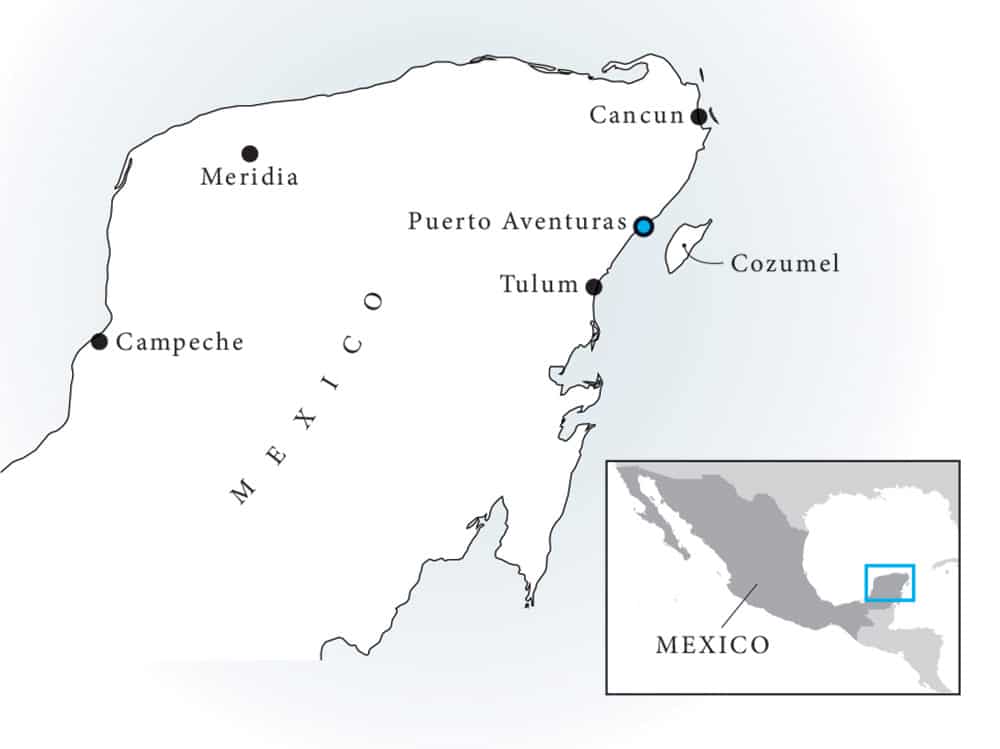
Each boat had a large tent set up behind its slip, and every evening was an opportunity to prepare meals that would put many top-tier chefs to shame. Even while fishing, many of the captains were talking on the radio about what they’d be adding to the family-style menu that night. Whether you were an official guest of the boat that evening or just walking through to get to your slip, you were going to be offered something to eat. “The best meals I’ve ever had in my life were served on a paper plate behind a PA boat,” Patsea’s Capt. Jim Garrity says. “There was always something good to eat—New York strip, fresh mahi, lobster tails and yellowtail snapper—and we all shared and ate together. That was the community we had in PA.”
It didn’t matter who you were or where you hailed from; in those few short months each year, old friends confirmed already existing bonds, and new introductions sparked lifelong friendships. “Sometimes, if you put a couple of Palm Beach boats, Texas boats, Gulf boats and North Carolina boats on a dock, they’d never talk to each other,” Thompson says. “But in PA, regardless of where you were from, everybody got along.”
Those captains, mates and owners found all sorts of ways to keep things fun, including playing basketball games in the morning next to a palapa before fishing days. Merritt’s “Little Bighorn”—a tournament typically held just outside the inlet in the last hour or so of fishing—was another great way to keep up morale. The winner would get a case of beer, which they would inevitably share with everyone else.
The teams at Puerto Aventuras even brought levity to things that were inherently stressful, such as getting in and out of the tiny and often treacherous inlet. “The inlet was small and shallow,” Bayliss says, “and it would be breaking there on most rough days with the wind blowing from the southeast.” Lots of boats had close calls, and some even wrecked; however, no amount of pucker factor was going to stop them from having a good time.”
“I remember seeing what seemed like 100 people sitting on the jetties to watch us come in when it was really rough one day,” Merritt says. “People had scorecards to rate how we did. I think I got all 10s!” On one particularly nasty day, Capt. Tommy Copeland, who ran the 55-foot Rybovich Breathless, received an eight from the judges for his perfect entry. When he asked, “Why only an eight?” the committee revealed that they had penalized his high-speed-approach strategy, citing “recklessness.” Copeland was just 26 years old at the time and on his first real-life trip as the boat’s official captain.
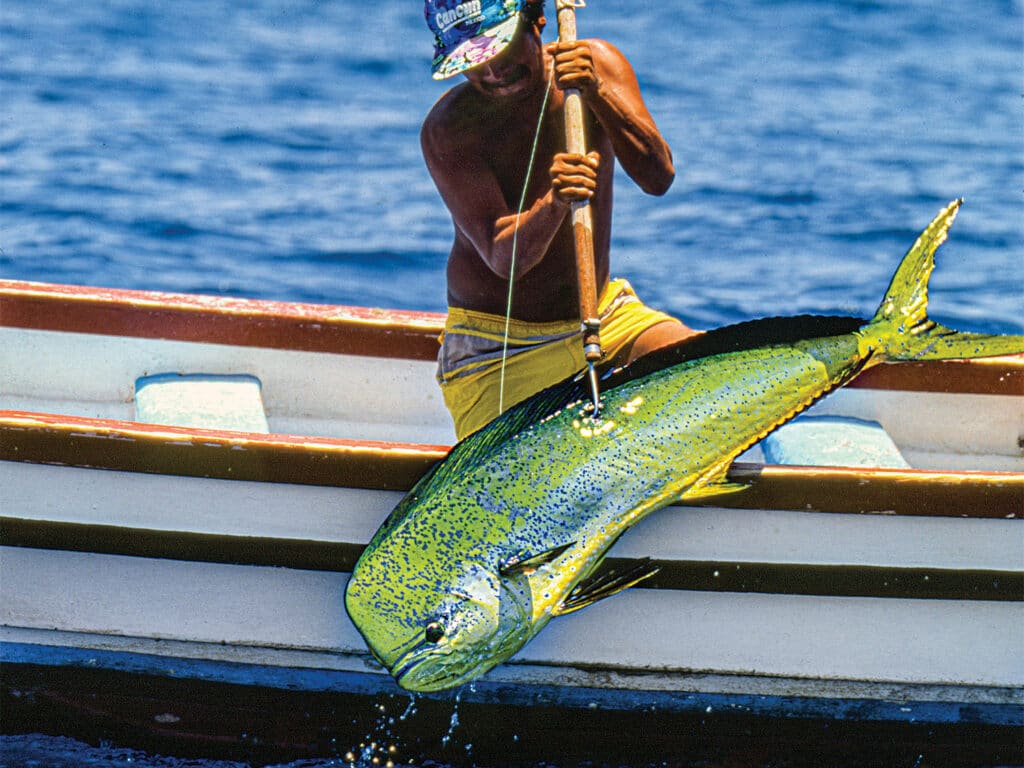
Once the boats were back at the dock and meals were finished, the real party got started, and it always seemed to kick off with some Jose Cuervo. “We had this big ol’ board down there that we called ‘the plank’,” Merritt recalls, “where we’d break out the tequila slammers.” They went through so much tequila that they felt inspired to decorate with the empty bottles, and a nearby tree made for a great landmark. They had playful names for every dock and location in that marina—Park Avenue, Ice Station Zebra and Skid Row—but the Tequila Tree is probably the most storied of them all. “I was the first one to hang a bottle,” Grant remembers with a laugh. “I cut some Dacron and hung a tequila bottle on the little tree growing behind the dock. By the end of the season, that tree had about 100 bottles on it.”
When the end of the season drew near, Merritt would put on his greatest production, perhaps the world’s rowdiest bike race—the Tour de PA. “Bubble had put on several bike races in the years before, but I think the best one was probably in 1996,” Danny Hearn says. “The Tour de PA was his dream, and he talked about it for weeks. And each year, it got bigger and bigger.” The race wasn’t just a huge event for the folks staying on boats in the marina. Everybody turned up to watch the participating mates put their bikes—and bodies—to the test. “It was such a unifier for the workers, locals, owners and crews,” Lynn Hearn says. “There was no divide between cultures or backgrounds. Everyone was just enjoying each other and the event.”
As mates donned yellow slickers, salad bowls, aluminum foil, pillows, buckets, and whatever “protective” gear they could find, paramedics and doctors stood by at the ready. Merritt and Hearn knew it was possible that someone could need a touch of medical attention, especially because competitors would be dropping 8 feet onto boat ramps and contending with strategically placed slicks of vegetable oil, all while chugging a beer in between.
Hearn played a special role in the race, one that speaks to his interest in self-preservation. A natural-born storyteller and speaker, he became Merritt’s right-hand man and the Tour de PA’s on-site sports commentator. It was a good way to avoid getting hurt, and Hearn reported the race to an audience who ate up every word he said. He wore a tie and a sport coat that he borrowed from someone in town. In one hand, he held a varnish brush with “PNN 8” written on it, as in Puerto News Network. In the other, he held a cigar. His engine-room hearing protection was perfect for keeping tabs on the “breaking news” from the course. It was an unbelievably ridiculous scene, one where grown men were hard at play. But sadly, it would be the last big event that they would have together in PA.
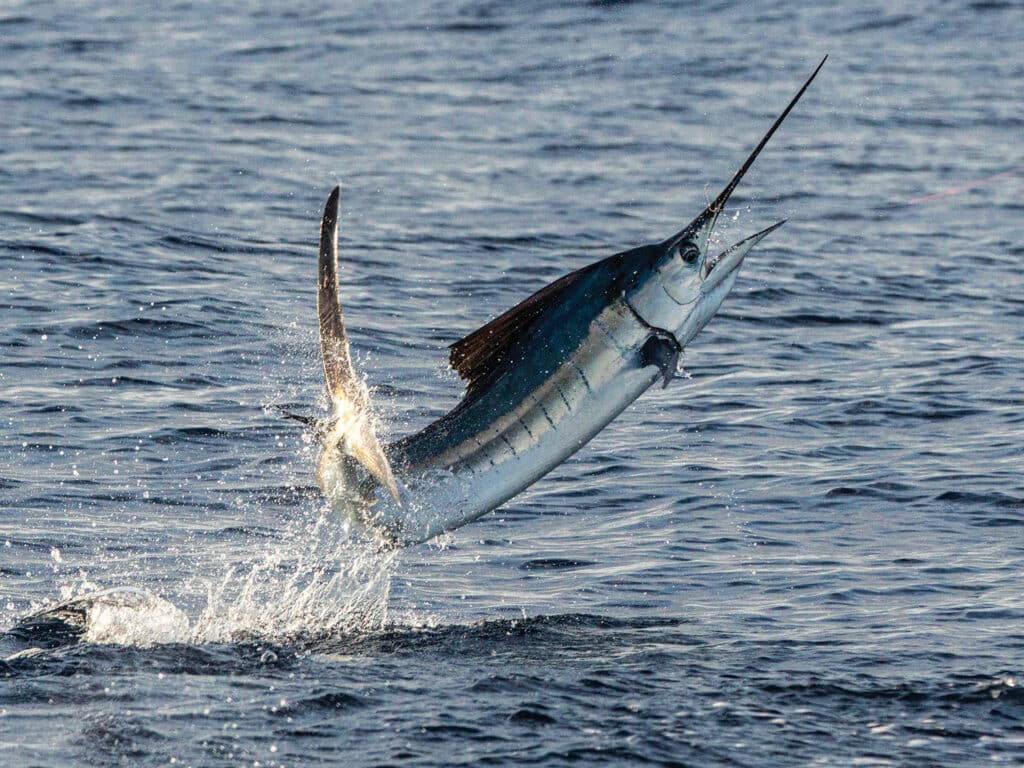
An End of an Era
Some speculate that fishing interests changed in the late ’90s, and folks chose to visit places where more bites were possible. Others suggested that boats simply got bigger and couldn’t fit in the marina anymore. Destinations that once seemed impossible to reach were made available through yacht-transport ships, and suddenly, privacy and the possibility of getting off the grid—especially later with the engrossing nature of social media—seemed to evaporate. The world changed, and fewer boats, unfortunately, made their way back to Puerto Aventuras.
Some of the folks I interviewed for this article have been back to Puerto Aventuras in the past decade or so, with one visiting as recently as 2018. By all accounts, the fishing is still excellent, but the marina and surrounding area have changed significantly. The destination that was once a haven for sport fishing’s Animal House now offers meet-and-greets with trained bottlenose dolphins. Although reports say that PA is still a very nice place, it will never be re-created, especially for those who were there in the golden years. “You know that saying that ‘once things change, they’re never the same’?” Turner asks. “Well, I think that’s true for Puerto Aventuras.” Turner and the others who were there at that time had captured lightning in a bottle, and eventually, that lightning slipped away with the millennium.
Read Next: We take a look at the amazing history of the fishing out of Cabo San Lucas, Mexico.
Whether posting to their “Puerto Aventuras in the 90s” Facebook group or meeting up for reunions at Pirate’s Cove Marina, which hosted more than 100 people in its first year in 2022, this brood still finds ways to spark the lightning. “By some lineup of the stars, we had such a wonderful gathering of unique people in PA,” Merritt says. “People don’t believe us when we describe the fishing and the camaraderie. It was the best of the best. This world could really use a lot of PA right now.”
Lynn Hearn adds: “It was such a privilege to live there at that time. We were all sharing that, this beautiful moment frozen in time.”




